The 7 Best Norwegian Fjords: Cruises, Activities, and Tips


There are so many fjords in Norway, and to be honest, you don’t need to see them all because most of them are very similarly beautiful. But if you’re on a quest for the very best Norwegian fjords, this article is my personal take.
Start with the ones that truly stand out for their unique activities, amazing views, and maybe just a touch of Viking charm. Whether you’re looking for the best cruises, the best hikes, or the best photo ops, this list covers the must-sees (and skips the "meh").
Grab your gear and get ready for a journey through Norway’s finest fjord landscapes—with a few insider tips from yours truly. Learn more about Norway in my other articles.
Bonus: Read to the end to find out the answers to some of the most frequently asked questions about the Norwegian fjords!

Get ready to explore the best fjords in Norway
These are the best, most beautiful fjords in Norway:
- Nærøyfjord (the one that inspired Frozen)
- Lysefjord (the one that reminded me of Vancouver)
- Aurlandsfjord (the one where you’ll find the most fun things to do)
- Hardangerfjord (the one that’s best for hikers)
- Innvikfjorden (the one in the wilderness)
- Geirangerfjord (the golden child of Norwegian fjords)
- Oslofjord (the urban one with islands steeped in history)
Naturally, no Norwegian itinerary would be complete without a visit (or seven) to the fjords. See what else I did on my 7-day road trip in Norway:
Sometimes, all you need to do is take the first step... I've filtered out the best hotels in Norway for you
Save it for yourself to come back to later, or share with your friends on social media!
The best Norwegian fjords: map

Partial map of Norway, pinpointing the best fjords
1. Top things to do around Nærøyfjord (a UNESCO World Heritage Site!)

The absolutely best fjord is Nærøyfjord
- My hotel recommendation: Vangsgaarden Gjestgiveri, Aurland
Nærøyfjord is a branch of Sognefjord, which is the largest and deepest fjord in the country. But because I’m particular and I like ranking stuff, I have to say that Nærøyfjord is my very favorite Norwegian fjord. And I’m not alone; the National Geographic Society once rated Nærøyfjord (along with Geirangerfjord) as the world’s best natural heritage site.
Whether on land or from the water, the views you get of Nærøyfjord are second to none, from just about any angle. I found Gudvangen particularly beautiful, even sort of surreal and dreamy.
Fun fact: Nærøyfjord is so beautiful that it inspired the wintry kingdom in Frozen, the Disney movie franchise. (You probably know this already if you have a young daughter.)
Go boating on Nærøyfjord

We rented a boat and took a Nærøyfjord cruise on our own. I highly recommend it!
You can’t come all the way to the best fjord Norway has to offer and not take to the water! Most tourist ferries here sail as a Nærøyfjord-Aurlandsfjord package deal, taking just two hours point-to-point. Your fjord landscape here consists of crisp, clear water, lush green cliffsides, and dramatic horizons that could keep you staring for days.
Pro tip: Consider renting your own little motorboat in Gudvangen, the village at the end of Nærøyfjord. You might not be confident enough to reach Aurlandsfjord in it, but it’s great to be able to cruise at your own pace. It’s much more relaxing.
Look over Stalheimskleiva, the steepest road in Europe
Fun fact: With a maximum gradient of 20%, there isn’t a road in Europe with a more insane incline than this one. Yep, Stalheimskleiva is the steepest of Norway’s mad and mighty hairpin-bend roads.

Stalheimskleiva—the steepest road in Europe
Sadly, it’s no longer open to vehicles after the increase in tourists to the area started to put very literal, very serious pressure on it. (Damn tourists. Aren’t we terrible people...)
But don’t despair, fellow planet-destroyer! You can still get to the top of Stalheimskleiva for some epic views not just of the road itself, but of Gudvangen, and two waterfalls. On a good day, you might even spot a golden eagle soaring above.
Check out “Viking Valley” in Gudvangen
As I mentioned briefly, Gudvangen, the village nestled among Nærøyfjord’s jaw-dropping cliffs, is honestly one of the most picturesque places I’ve ever seen. It also happens to be home to the famed “Viking Valley of Njardarheimr”, which feels like a genuine Norse retreat, even though it’s incredibly staged.

We went to see how the Vikings lived
For NOK 235 (USD 21), you get a ticket to this weird, immersive experience where "villagers" roam. It’s great for kids, big and small (and don’t worry, the axe-throwing is perfectly safe... probably). I already considered myself a wise-ass on Viking history, and I learned more than I expected to about their farming, fishing, and seafaring. For instance...
Fun fact: Vikings weren’t a nation of people, but seafaring warriors. Their gear—shield, axe, spear, and dagger—doubled as farm tools, and missing equipment could land them fines. Helmets? Super rare. Swords? So costly that only a few of the elite had them.
All in all, who’d have thought that some modest little huts with grass roofs would impress me so much? Seriously, this is one of the best open-air museums I’ve ever seen, and even my girlfriend was like an excited little kid on a school trip!
But bear in mind: Surprisingly, the guide on the hourly tour wasn’t very fluent in English—I’d learned to expect better in Norway.
2. Top things to do around Lysefjord

In Lysefjord you can go on two very popular Norwegian hikes—Pulpit Rock and Kjerag hike
- My hotel recommendation: Ydalir Hotel, Stavanger
Lysefjord surprised me. I expected raw wilderness but instead found a vibe more like Vancouver—a perfect blend of rugged beauty with a refined, almost urban edge.
This is a popular choice of Norwegian fjord to visit because it’s the setting for not one, but two of Norway’s most iconic hikes. It’s also not as out in the sticks as some other fjords on this list, located just over an hour’s drive from Stavanger.
Pro tip: Stavanger Airport is a surprisingly busy hub, so it’s worth trying to fly here for easy access to the fjords.
Go hiking (Pulpit Rock and/or Kjerag)
As I say, there are some awesome and adrenaline-pumping hikes to be done around Lysefjord. I’ve conquered the two most famous: Pulpit Rock (Preikestolen) and Kjerag/Kjeragbolten.
Pulpit Rock is certainly the easier of the two (but don’t get complacent; you still need to be reasonably fit and prepare accordingly). You can get to the summit in around 2 hours, where you’ll find a table-top cliff providing surreal fjord views. I’d recommend pretty much anyone do this hike on their visit to Norway; read my article about Pulpit Rock to find out more!

Those are the two must-do things in Lysefjord
Kjerag, meanwhile—not to sugar-coat it—is a real bastard. A steep, slippery, but worthwhile bastard; the kind of encounter that makes you value your life much more. The sense of accomplishment you get from reaching the top is indescribable. But I tried to, in as many words as possible, right here in this article on my own experience with Kjerag.
Go on a Lysefjord cruise
I can recommend Rødne Fjord Cruise to take you on a tour around this must-see fjord. Their boats are incredibly comfortable, with roomy leather seats inside and massive windows that offer panoramic views. They sail most days in the year from Stavanger for NOK 790 (USD 71) per person, and the trip takes about 3.5 hours.
This fjord experience boasts some of the best scenery in Norway, rivaling Yosemite or Mexico’s Sumidero Canyon. The fjord’s impressive cliffs rise nearly 1,000 m (3,281 ft), and the journey into its depths is a proper feast for the eyes.

A very comfortable boat cruise full of amazing views
There’s Vagabond’s Cave—a rugged nook known locally as “Fantahola”. (I was a little disappointed to see that it’s not actually a hole filled with Fanta, but any geological marvel is good enough alternative for me.) You’ll also spot plenty of goats from a distance, perched on the cliffs, just chilling like they own the place.
And scattered along the fjord’s bank are cute little houses, making me dream of having one myself. Imagine waking up to that kind of view every day! Meanwhile, my girlfriend was more interested in keeping up with the Wimbledon score on her phone. There’s no pleasing some people...
Explore Stavanger, Norway’s third-largest city
Stavanger makes a good base for exploring Lysefjord and the surrounding area, and it’s only fair that you show the city itself some love, too. Essentially, the place is an eclectic mix of Viking history, colorful streets, and an oil-fueled economy that they just won’t shut up about.

Make sure to stop in Stavanger
A practical plus point: The city center is compact, and many of the main attractions, like Gamle Stavanger, Fargegaten, Stavanger Cathedral, and the waterfront, are within walking distance of each other. By walking everywhere, you’ll also be able to take in the famous street art properly.
For more tips for what to do here, plus my personal itinerary details, make sure you see my article on things to do in Stavanger!
Climb Flørlitrappene, the world's longest wooden staircase
On the south side of Lysefjord, you’ll find the small village of Flørli. Curiously, there are no roads in Flørli, yet from here, someone did find time to build the longest wooden staircase in the world. Flørlitrappene consists of exactly 4,444 steps, so I’m also going to assume this person must have been at least a bit obsessive.

Flørli can be accessed only by ferry
The fjord and waterfall views along the way up are simply gorgeous. But treat this as a proper hike; it takes over 3 hours to climb these steps and the gain in elevation is about 470 m (1,542 ft). Who knew stairs could be this demanding?...
Bear in mind: Flørli can only be accessed by the ferry that goes between Lauvvik and Lysebotn, the villages at either end of Lysefjord. You need to book tickets for this ferry in advance, and it doesn’t go on Saturdays. Another option is to rent your own boat to get around Lysefjord.
3. Top things to do around Aurlandsfjord

Aurlandsfjord
- My hotel recommendation: Vangsgaarden Gjestgiveri, Aurland
Like Nærøyfjord, Aurlandsfjord is a branch of Sognefjord. But this is the branch that is slightly more geared toward tourists as the village of Flåm, located at its end, is a particularly popular place to visit. This means you'll be spoiled for choice of things to do around Aurlandsfjord!
Explore Aurland
Take some time to explore Aurland, especially if you’re staying in one of the little cabins at Vangsgaarden Gjestgiveri. With its luxurious views and scenic location on the eastern bank of Aurlandsfjord, this might actually be the best-placed fjord village I’ve ever seen.
Tip: Don’t miss out on the Stegastein Viewpoint located just outside Aurland, and ideally, head up at sunset to avoid the crowds. This is a viewing platform that comes out from the cliff edge, suspended 650 m (2,133 ft) above the fjord. It’s pretty stomach-churning, but also incredibly breathtaking.
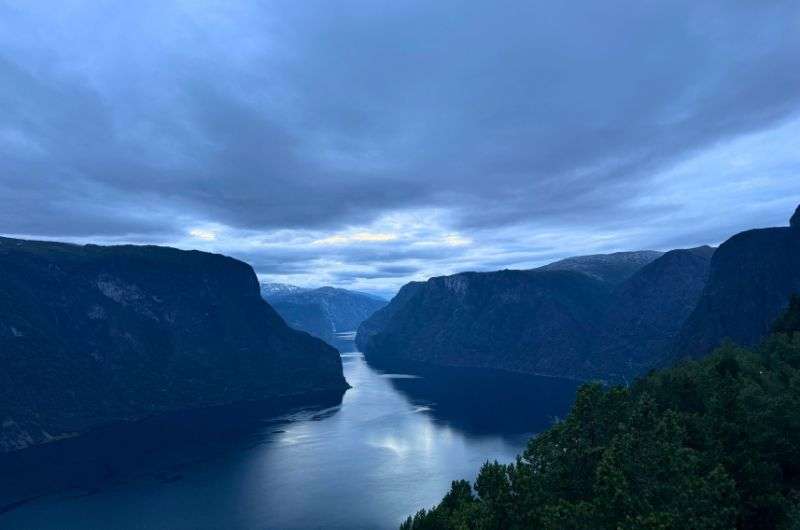
The view from the epic Stegastein viewpoint in Aurland
Ride the Flåm Railway
Self-proclaimed as “one of the world’s most beautiful train journeys”, the Flåm Railway (Flåmsbana) is one of Norway’s top attractions. This historic 20-kilometer (12.4-mile) train line drops from the not-even-big-enough-to-be-a-village of Myrdal, at 860 m (2,822 ft), down to Flåm, at sea level.
The idea is that you get to see one of the most beautiful fjords in Norway, as well as the jaw-dropping scenery that surrounds it, with very little physical effort. Think of it like a city tour bus... except without an open top deck, and with the chance of trying sveler (Norwegian pancakes) on board.
Pro tip: There are several tourist companies that offer Flåm Railway tickets, but go directly with the operator, vy.no, for the cheapest deals.
Bonus tip: If you’re a train geek, have a look around the small Railway Museum right by the station in Flåm.

Train is one of the cool options to enjoy amazing views of Flåm
Brave the Flåm Zipline
Fun fact: At 1,381 m (4,531 mi), this is the longest zipline in the Nordics. This bad boy will send you down the Flåmsdalen valley at a maximum speed of 100 km/h (62 mi/h). You get the idea; if you’re a bit of a thrill-seeker, this is the tip for you.
Did I partake? Hell no. But still, I can’t argue that this shouldn’t be included in a list of the top things to do around Aurlandsfjord.
Want to find more things to do in Flåm? Look no further than this article...
Go boating on Aurlandsfjord
I’m going to reiterate what I mentioned about cruising on Nærøyfjord: Don’t miss the opportunity to rent your own boat! My girlfriend and I got one in Flåm from the creatively-named small business, Flåm Boat Rental.

We’ve had a wonderful time on our rented boat!
The boats are straightforward to drive at 40 km/h (25mi/h), and we lucked out with perfect weather and calm water—the fjord was as smooth as glass. I must say that being at the helm gives you a whole new perspective. I was in total control as I zipped between these iconic fjord cliffs; literally in the driver’s seat.
But if you’re an underconfident driver or you just really want the Nærøyfjord-Aurlandsfjord package deal, FjordSafari does plenty of variations of fjord cruise, also from Flåm. For more information on FjordSafari, check out my detailed article on the best things to do in Flåm.
4. Top things to do around Hardangerfjord

Can a fjord be too pretty? @ Hardangerfjord
- My hotel recommendation: Trolltunga Hotel, Odda
In my opinion, the best things to do around Hardangerfjord revolve around hiking. Sure, there are Hardangerfjord cruises, most of which operate from Bergen (which is pretty far away, and bear in mind that this is one of the longest fjords in Norway and in the world).
But honestly? Although Hardangerfjord is picturesque, it’s not quite as stunning as numbers 1 to 3 on this list. And after cruising down those, you’ll probably start to get bored of ferries and motorboats.
So, take my advice: Have some time off the fjord cruises for now. And if you like hunting for waterfalls, roaming around glaciers, and taking on long treks, the Hardangerfjord region is definitely the place for you. Just remember: Hardangerfjord for hikers!
Go hiking (Trolltunga)
If you’ve never seen any pictures of Trolltunga, it’s a narrow cliff platform perched 700 m (2,297 ft) above Ringedalsvatnet lake. If you’ve ever wanted to feel like you’re standing on the edge of the world, and somewhat like your heart is about to jump out of your mouth, take it from me: this hike is your ticket.

A little bit of romance after conquering the Trolltunga
Just be aware that it’s a real endurance challenge that’ll take you all day. You’ll cover 25.7 km (16 mi) in distance, so no, I’m not kidding. Still, it's one of Norway’s most popular hikes, and a lot of people choose to camp along the way and do it over two days. (I didn’t, but I’m as good as allergic to sleeping bags and tents.)
Intrigued? You should be; this article on my experience hiking Trolltunga will give you all the other details you need. And don’t worry—only one person has ever fallen to their death from the top.
See the Husedalen waterfalls
If you’re craving an epic waterfall adventure (and why wouldn’t you be?), the Husadalen valley is where you’ll find not one, but four beautiful, powerful waterfalls stacked along a single hiking trail. I picked the hike to see them (Nykkjesøyfossen) as one of my favorite treks in Norway.
Pro tip: It’s a popular walk, so arrive as early in the day as you can. Parking is free but spaces quickly get snapped up, especially on weekends. We showed up around 11 am and even then, only a few spaces were left.

Husedalen waterfalls
The hike itself is relatively challenging. Think steep inclines (612 m [2,008 ft] of elevation in total), a 10-kilometer (6.2-mile) round-trip, and some seriously slippery trails. The terrain makes it feel more like Kings Canyon in California than your typical family hike.
Another pro tip: Unless you want a hose-down, bring good-quality waterproof layers. It’s very misty by the falls.
Go on a tour of the Folgefonna glacier
Folgefonna, located near Hardangerfjord in the National Park of the same name, is a unique maritime glacier. I can confirm that walking on it is a really cool experience—figuratively and literally.
Fun fact: With a staggering area of 545.2 km² (201.5 mi²), Folgefonna is the third-biggest glacier in mainland Norway!
You can only hike the Folgefonna glacier in summer as part of a guided tour, and Go Fjords offer great, comprehensive 5-hour ones between June and August. If you need it, they also organize transport to and from Bergen for you, as well as renting ice hiking equipment.

Ice hiking the Folgefonna glacier was unforgettable!
I really recommend this tour, but here’s a tip: if you can afford it, hire a private guide instead. Though the Go Fjords tour was mostly amazing, I’d have appreciated covering more ground at my own pace, personally.
5. Top things to do around Innvikfjorden

Innvikfjorden
- My hotel recommendation: Stryn Hotel, Stryn
Innvikfjorden is a branch of Nordfjorden and lies just outside Jostedalsbreen National Park, which is around 150 km (93.2 mi) southeast of Ålesund. This place is quite far away from any major town or city, but let me tell you now, you’d be journeying to somewhere really magical.
Its banks are dotted with charming villages and farms, creating that perfect Norwegian-postcard view. The whole area is also known for its array of wildlife. Don’t make the same mistake I made and double-check that you’ve packed your binoculars; you’ll want to see the seals lounging on rocky outcrops and the seabirds calling from above!
Go hiking (Briksdal glacier)
So, what makes Jostedalsbreen National Park so special? Not to go all geography-teacher on you, but it’s only home to the biggest glacier on the European mainland!
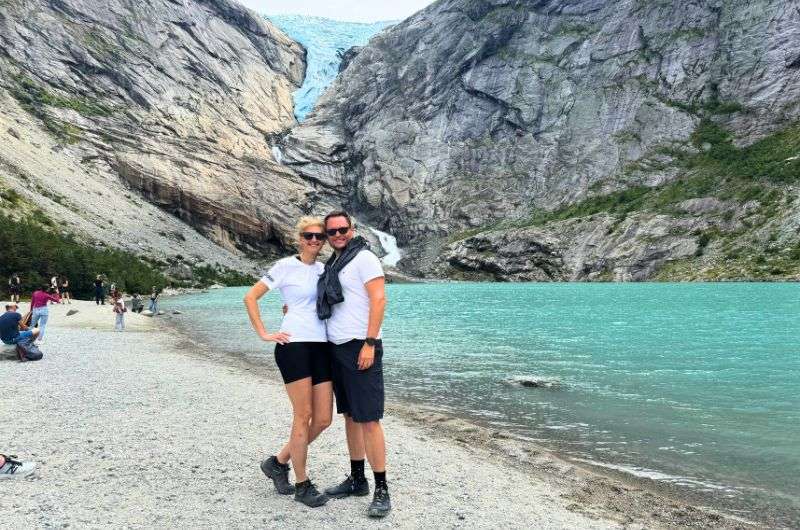
The Briksdal glacier hike is an easier one (look at the glacier cascading down behind us)
As I mentioned in my article on top Norwegian hikes, Briksdal pretty much has everything: massive rocks, crashing waterfalls, and crazy glacier views. Plus, this is actually an easy hike to complete; it’s 5.3 km (3.3 mi) and a very gradual ascent. This means it’s particularly kid- and pet-friendly.
Fun fact: Briksdal glacier is about 9,000 years old, having been around since the last ice age. The ice is now a shocking shade of blue due to its compact, airless structure.
But concerning things to do around Innvikfjorden, hiking Briksdal glacier is just the tip of the iceberg (pun absolutely intended)...
This pick features in my article on the best hikes in Norway:

Explore Olden
Olden is the peaceful village at the end of Innvikfjorden. Or, at least it was peaceful once, before the huge cruise ships came along.
Either way, it’s a lovely crevice of civilization on the edge of a truly beautiful fjord. I recommend you explore this place as a form of vacation downtime. The village itself cute and quaint, with its old churches and local eateries that offer a glimpse into traditional Norwegian life.

On the way to Briksdal Glacier you will come across this spectacular waterfall (and get completely soaked)
Pro tip: Eat here or starve. Olden is one of the few places for miles where you’ll find any restaurants.
In keeping with the cuteness, there’s also one of those mini tourist trains that’ll take you for a 70-minute look around the area. It departs from the port as its target market is mega-cruise day-trippers. Tickets cost NOK 200 (USD 18), and they even throw in a guide to tell you some local facts and stories.
Ride the Loen Skylift
This cable car, one of the steepest in the world, takes you up 1,011 m (3,317 ft) in just five minutes. Therefore, you could say that the Loen Skylift is a softer option for those who are too pussy even to think about the Flåm Zipline at Aurlandsfjord (me).
Setting off from the village of Loen at the fjord’s edge, you get sweeping views from the cable car over Innvikfjorden and the valley below. The vista at the top speaks for itself. But if you’re so inclined (hey!), Mount Hoven awaits with extra hiking trails ranging from gentle walks to challenging mountain treks.
A round-trip ticket will cost you NOK 495 (USD 45).
Bonus note: Unlike a lot of things in Norway, the Loen Skylift is open all year round!
6. Top things to do around Geirangerfjord (also a UNESCO World Heritage Site!)
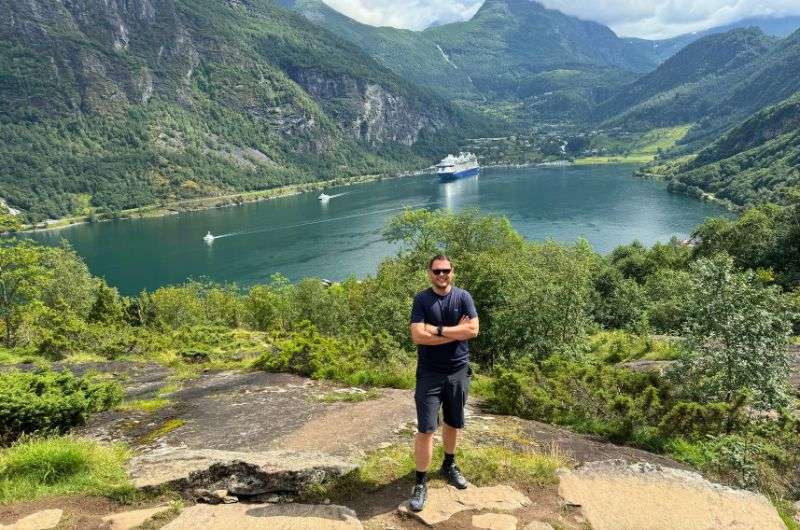
Geirangerfjord
- My hotel recommendation: Hotel Union Geiranger Bed & Spa, Geiranger
Okay, Geirangerfjord may be packed with tourists, the goody-goody of the Norwegian fjords, but it’s popular for a reason. This is said to be one of the most beautiful fjords in the world—a whole 260 m (853 ft) in depth and 15 km (9.3 mi) in length of beauty, hence its place on the UNESCO World Heritage list. Get your timing right to dodge the biggest crowds (like I did), and you can make the maximum out of the area's wealth of activities.
My advice? Get an early start to avoid parking headaches, bring sturdy boots, and set aside a full day to explore this top fjord.
Go hiking (Skageflå and/or the Seven Sisters Waterfall)
If you’re looking for a serious adventure, the Skageflå hike is an epic way to experience Geirangerfjord. You can either take a water taxi from Geiranger village halfway to Skagehola (NOK 295 [USD 27] per person), or hike the long way there, which takes between 4 and 5 hours. Either way, the trail up the cliff is a bit of a beast with its muddy stretches, but in typical Jan fashion, I loved the challenge.

Views from Skyslagg viewpoint
Fun fact: Skageflå is actually an old goat farm which was abandoned in 1916. Frankly, I can't think of many places that are less practical to run a farm. No wonder it was abandoned...
As you hike, you’ll see the fjord below, cruise ships that look like toys, and the impressive Seven Sisters Waterfall in the distance. But fair warning: If you want some panoramic shots of the fjord, forget it, as the dense forest on the way limits your view.
Pretty much directly opposite on the other side of the fjord, the Seven Sisters Waterfall is one of Geirangerfjord’s most famous sights. Hiking to its viewpoint is a must; although it looks majestic from down on the fjord, this trail gives you a unique vantage point and a powerful sense of the falls’ scale.
Note: The hike is moderately difficult, and it can get slippery near the water, so wear practical shoes with a good grip.

Beautiful scenery on the hike
Visit Dalsnibba viewpoint
Dalsnibba viewpoint is another classic Geirangerfjord stop, famous for its altitude (1,500 m [4,921 ft]) and sweeping views. It’s the highest fjord viewpoint in Europe that’s accessed by road, offering an incredible panorama of the fjord, the Jostedalsbreen glacier, and endless, towering mountains.
The toll road (NOK 330 [USD 30]) is steep and thrilling, quickly taking you from sea level to dizzying heights. The viewpoint itself can get busy, and cloud cover sometimes blocks views, so check the weather forecast and go on a clear day if possible.
Is it worth the money? Yes, but maybe only if you haven’t had the chance to get to any other (free) viewpoints.
Note: Understandably because of the steep road, the viewpoint is only open in the summer, between May and October.
Go kayaking on Geirangerfjord
For a close-up encounter with the Geirangerfjord’s waters, a kayak is the way to go. We rented ours by the hour from Active Geiranger, and no regrets were had. You can book online in advance; prices start at NOK 400 (USD 36) for a single kayak.
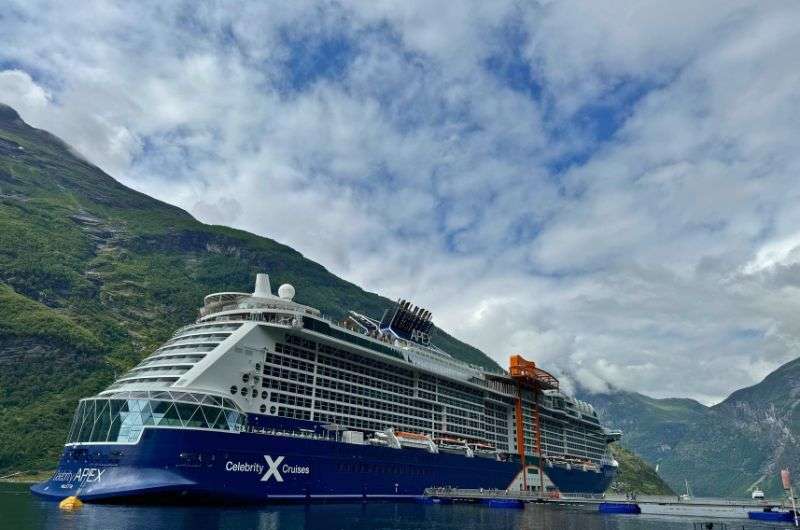
Another option is to take a tour of the Geirangerfjord on this huge titanic. But kayaking is better
Fjord kayaking offers an amazing perspective as you get to paddle right beneath towering cliffs and waterfalls. It's a bit surreal to glide under the shadow of enormous cruise ships passing by! And be prepared for chilly temperatures—those glacial waters are cold all year round.
7. Top things to do around Oslofjord

Oslofjord
- My hotel recommendation: Voksenasen Hotell; Best Western Signature Collection, Oslo
Oslofjord might not be Norway’s wildest fjord, but it comes with charming islands and historic sites that are all easy day-trip options from Norway’s capital, Oslo. In other words, I wouldn’t go out of my way to visit Oslofjord—the scenery just doesn’t cut it—but exploring the fjord is a great thing to do in Oslo, should you happen to be there.
Go on an Oslofjord cruise
It doesn’t take a genius to work this out: an Oslofjord cruise is the best way to take in the region’s island-dotted waters. Tours typically cover the major highlights, from the colorful coastal towns to the historic Oscarsborg Fortress.
There’s a range of options: classic sightseeing boats, RIB-safaris, and evening dinner cruises. Tip: An evening coastal cruise with views of the sparkling city lights is something else. It’s so romantic, you’ll feel like you’re about to be proposed to (though maybe not if you’re on vacation with your mom).
Visit Oscarsborg Fortress
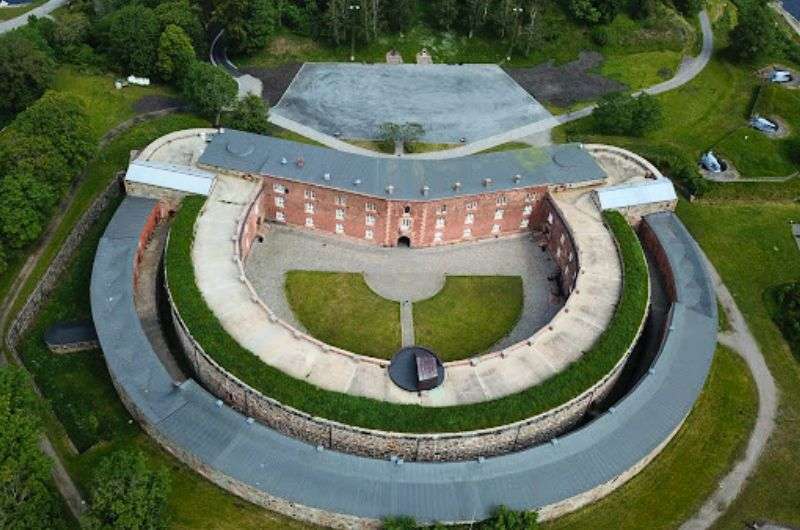
Oscarsborg Fortress
If the boat tour has left you curious, you can see Oscarsborg Fortress close-up! A quick ferry ride from Drøbak, this 19th-century fortress located on its own island played a crucial role in defending Norway during the Second World War.
Today, visitors can explore its grounds, tunnels, and museums, and enjoy panoramic views over the fjord. The fortress also has its own restaurant, and in the summer, there are even concerts and events. It’s open most days from 10 am to 4 pm.
Explore Hovedøya island
Just a short ferry ride from central Oslo, Hovedøya island offers a mix of history and nature. Here, you can wander through the ruins of a 12th-century Cistercian monastery, sunbathe on sandy beaches (if you can brave the wind), or stroll along forest trails for scenic coastal views.
Tip: Keep an eye out for World War II bunkers and fortifications, reminders of the island’s storied past.
All in all, Hovedøya is an ideal spot for a laid-back day trip. Plus, it’s an easy way to escape Oslo’s bustle without going too far.
What is a fjord?
A fjord is a long, deep, narrow body of water that extends inland from the sea, typically flanked by steep cliffs or slopes on either side. They’re formed by the action of glaciers, which carve out deep valleys as they move. When the glacier retreats, the sea floods the valley, creating the characteristic shape of a fjord. As such, dramatic fjords are found in places with a history of glaciation, such as New Zealand, Iceland, and parts of Canada and Chile, as well as Norway.

This is Nærøyfjord
Which are the most famous fjords in Norway?
The most visited and most famous fjords in Norway are Geirangerfjord, Sognefjord (including Nærøyfjord and Aurlandsfjord), Hardangerfjord, Lysefjord, and Hjørundfjord. All these fjords showcase the best of Norway’s dramatic landscapes and every one is striking in its own way.
What’s more, they’re located toward the south of the country—each not too far from at least one of Stavanger, Bergen, or Ålesund—so they’re accessible to travelers. Fjord cruises also run in Northern Norway, but they are less popular as it’s colder and more difficult to get to.
The best Norwegian fjord to visit
If you’re traveling to Norway on a cruise ship, your package vacation will likely take you to all, or most of the best Norwegian fjords: Geirangerfjord, Sognefjord, and Hardangerfjord, to name a few.
If you’re planning your own Norwegian fjord holiday, the best fjord to visit depends on what exactly you’d like to experience. For example, if you want to see some UNESCO-stamped beauty, you should pick Geirangerfjord or Nærøyfjord; if you’re a serious hiker, choose Hardangerfjord or Lysefjord; and if you want more of an urban fjord tour, opt for Oslofjord.

Geirangerfjord
Is it worth doing a Norwegian fjords cruise?
Yes, a Norwegian fjords cruise is absolutely worth the time, money, and planning. Norway’s fjords offer some of the world’s most stunning natural landscapes, with sheer cliffs, towering waterfalls, and lush greenery—all best viewed from the water.
Norwegian fjord cruises are usually relaxing, and the entire experience is immersive, with stops in charming villages and opportunities for activities like kayaking or hiking. It’s never been so popular as it is now to travel to Norway for this purpose, and all in all, it’s easy to see why.
When is the best time to visit Norway for the fjords?
The best time to go to the Norwegian fjords depends on the experience you want.
Summer (June–August) offers ideal weather and extended daylight, perfect for cruising and outdoor activities. Spring (April–May) brings fewer crowds, blooming orchards, and stunning waterfalls, though weather can be variable.
Fall (September–October) comes with vibrant foliage and quieter trails, which is ideal for hikers. And Winter (November–March), though very cold, reveals the fjords' dramatic beauty under snow, with serene, crowd-free cruises.
Each season has its charm, but summer is optimal for warm-weather activities, and this is when I visited.
Norwegian fjords: weather
As you’d expect, the weather on a typical Norwegian fjord cruise varies by season. Summer is mild, with temperatures around 15–20°C (59–68°F) and long, sunny days. Spring and fall can be cooler and rainy. And winter brings snowy and icy conditions, with temperatures often near freezing.
Tip: Always pack layers as weather on the fjords can be very temperamental. Plus, whatever the season, you're likely to catch at least some wind.
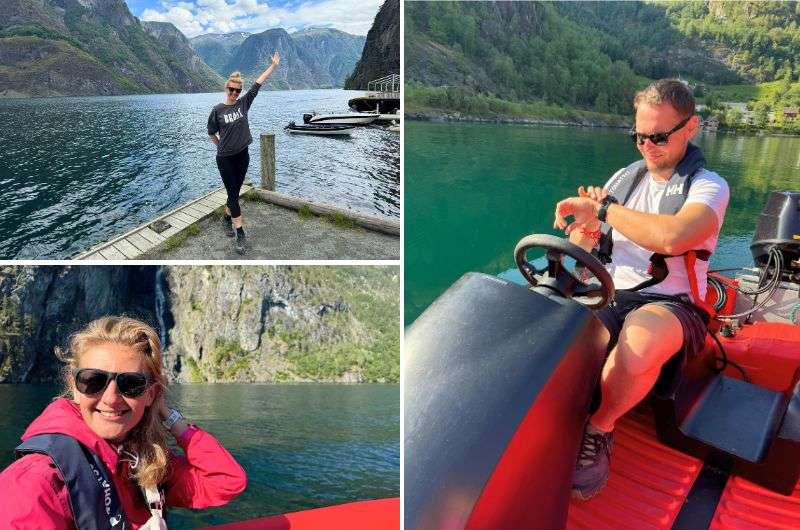
Each season has its pros and cons
What's the best way to see the fjords in Norway?
The best way to experience the Norwegian fjords is by cruise, which offers a relaxed and comprehensive way to take in the landscapes. These cruises usually travel up and down the most famous fjords like Geirangerfjord, Lysefjord, and Innvikfjorden, letting you see the cliffs, waterfalls, and villages from the water, and in comfort.
Cruise options range from package holidays on large international cruise liners to smaller, more intimate boats and “fjord safaris” that operate on a daily basis. The smaller cruises often explore narrower fjords in more detail, as well as the main fjords.
And if you want ultimate flexibility, you can even rent your own motorboat in some fjordside villages such as Flåm. This allows for personalized fjord explorations at your own pace.
Can you see the Norwegian fjords without a cruise? Yes, it’s possible to see the fjords entirely from land. However, bear in mind that you’d need to be prepared to plan your own itinerary and do a lot of driving, especially if you wanted to see more than one fjord. Incidentally, I planned my own 14-day itinerary for my recent trip to Norway, and it worked very well.

Taking a cruise or boat trip is the best way to see fjords
Sometimes, all you need to do is take the first step... I've filtered out the best hotels in Norway for you
Save it for yourself to come back to later, or share with your friends on social media!
This post contains affiliate links. I earn a small commission if you make bookings through my links, at no additional cost to you. Thank you for your support!
















Comments | Thoughts? Give us a shout!